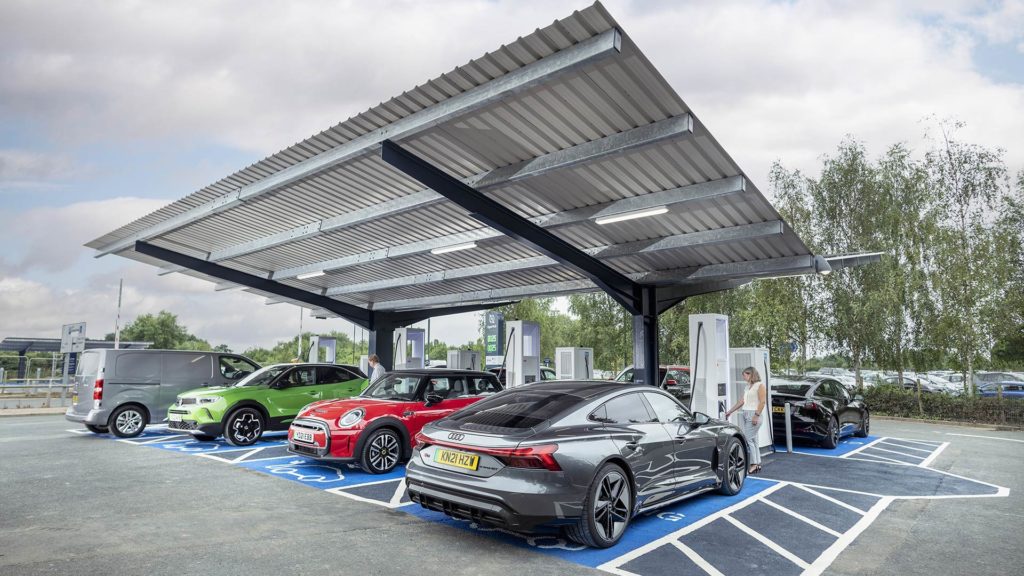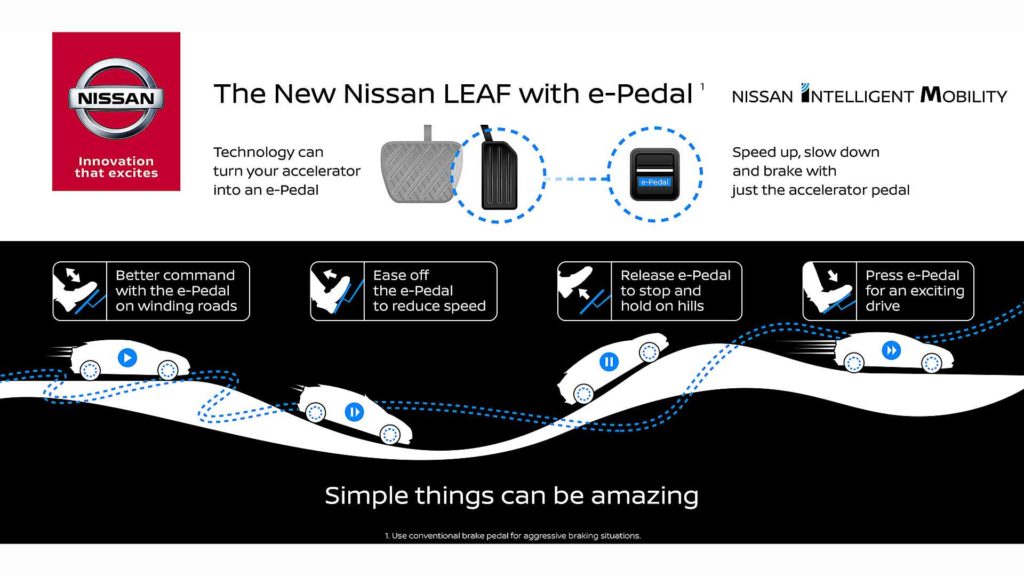Being able to drive using just the accelerator pedal is one brilliant benefit of owning an electric car. In most situations, instead of using the brake pedal (don’t worry – you still get one), simply lifting off the ‘gas’ will slow the car down sufficiently.
You can modulate this effect by not fully removing your foot from the accelerator pedal, so you don’t get the full braking force.
Alternatively – when approaching a junction or red traffic light, for example – you can coast to a complete stop without using the brake at all.
How does one-pedal driving work?
One-pedal driving harnesses the regeneration effect of the car’s electric motor. This can run in reverse, switching from a motor to a generator. The friction slows the vehicle down and creates electricity at the same time.
So-called regenerative braking can help recharge an electric car’s batteries, and offer you a bit of extra range. It won’t make a massive difference, but it may add a few miles over the course of a journey. It also makes driving easier, particularly around town.

One-pedal driving doesn’t suit every situation. On a motorway, you may not want a braking effect every time you lift off in the ebb and flow of traffic. The ability to coast down a long hill is lost, too.
However, there is always the option to switch the system off – and often to vary the amount of braking as well. Some electric cars such as the Honda e have paddles behind the steering wheel that allow three levels of regenerative braking, according to your preference.
The Nissan Leaf, meanwhile, has a dedicated ‘e-Pedal’ button on the dashboard for one-pedal driving. This increases the amount of deceleration – and thus energy regeneration – when you lift off. The infographic below explains how it works.

Not every electric car offers the option to drive with one pedal – Porsche didn’t consider it necessary on the Macan EV, for instance – but it’s increasingly common. The technology is also fitted to many hybrid and plug-in hybrid cars.
How easy is driving an EV with one pedal?
Even if your car is equipped with a one-pedal system, you can always switch it off and use the brake pedal in the normal way.
The reality, though, is that within half an hour, you will probably have acclimatised to one-pedal driving and enjoy its benefits. Once you have the technique mastered, we reckon you will use it most of the time. Making driving easier and boosting electric range is a win-win, after all.
ALSO READ:
How accurate is the official range of electric cars?


Many electric vehicles allow for “one-pedal driving,” enabled by an electric car s regenerative braking system. When a driver lifts off the accelerator, the regenerative system temporarily converts the electric motor that powers the car into a generator, which then converts the kinetic energy of the car’s forward momentum back into electricity and feeds it into the battery pack. This is experienced from behind the wheel as the car decelerating as if the driver had dropped it into a lower gear or braked moderately.
Although possibly a good idea from a purely technical (battery life) standpoint, this is an absolutely horrible idea. We humans have this pesky thing called muscle memory. Any driver utilizing “one pedal” driving even on a semi-regular basis will unconsciously become accustomed to not using the brake pedal. So, when this driver gets into an ICE car that only slows down/stops when the brake is applied – BAM! Rear-ending the car in front is the good news, running over and killing a pedestrian is the bad news. No thank you!!!!
Hi Bob, I drive an electric vehicle on a daily basis and use 1 pedal driving on every journey. I also irregularly jump into my wife’s manual geared petrol driven vehicle without any issue whatsoever. Muscle memory doesn’t mean you completely forget how to drive other types of vehicles!
Totally agree Kevin.
David